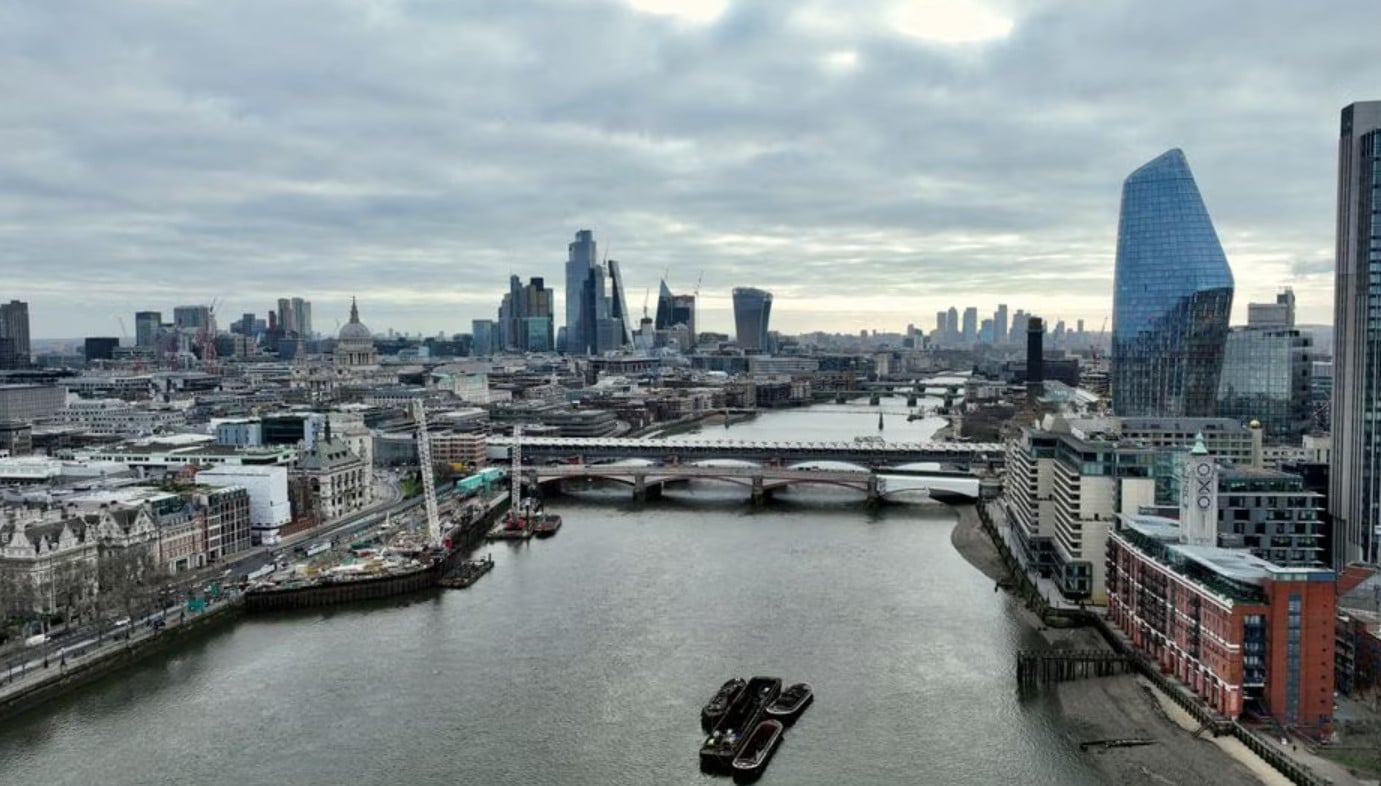Britain’s economy contracted unexpectedly for a second month running in May, official data showed on Friday, compounding worries at home for finance minister Rachel Reeves as the nation navigates growing global turbulence.
Gross domestic product shrank by 0.1 per cent after a 0.3 per cent drop in April, the Office for National Statistics said.
Economists polled by Reuters had mostly forecast that gross domestic product would rise by 0.1 per cent from April’s level. And while the services sector eked out a sliver of growth, declines in industrial output and construction dragged down overall output.
Following a growth surge early in the year, Britain’s economy could now be facing flat or weaker growth than previously expected for the April-to-June period, economists said.
Friday’s data now adds to expectations the Bank of England will cut interest rates next month.
“The lack of momentum in the UK economy indicated by these sluggish figures means that an August interest rate cut currently looks inevitable, despite the recent spike in inflation,” said Suren Thiru, economics director at accountancy body ICAEW.
Prime Minister Keir Starmer’s Labour government has struggled to improve growth meaningfully in its first year, with a tax hike on employers and US President Donald Trump’s trade wars weighing on the economy.
Britain’s goods exports to the United States – its single-largest export destination – surged earlier this year as US importers rushed to beat the imposition of Trump’s tariffs.
But they fell sharply in April. And trade data published on Friday showed only a slight recovery to around 4.4 billion pounds ($6.0 billion) in May, bringing export levels back down to where they were roughly three years ago.
Economists say it looks increasingly likely Reeves will need to raise taxes again in her next budget – something she had hoped to avoid.
“While today’s figures are disappointing, I am determined to kickstart economic growth,” Reeves said of Friday’s data.
Britain’s economy expanded rapidly in the first quarter of 2025, outstripping growth in other countries in the Group of Seven advanced economies. In May the Bank of England revised up its full-year growth forecast to 1 per cent.
However, much of the growth in early 2025 was likely linked to the expiry of a tax break for some home purchases in April, which boosted the sector before the deadline, as well as a rush by manufacturers to beat higher US import tariffs.
The BoE has said it thinks the economy grew by about 0.25 per cent in the second quarter of 2025.
After Friday’s May figures, June’s monthly data will need to show at least a flat reading, assuming no revisions to earlier months, in order to achieve any growth for the quarter, the ONS said.
A month-on-month contraction of 0.4 per cent or worse for June would herald a quarterly contraction.
“The second straight decline in monthly real GDP in May will increase concerns that the government’s growth plan has been derailed by external and domestic shocks,” said Raj Badiani, economics director, Europe, at S&P Global Market Intelligence.
Yael Selfin, chief economist at KPMG UK, said she expected the economy to have remained flat in the second quarter, but spending by households might now be picking up now.
“With wage growth remaining ahead of inflation and borrowing costs set to ease further, a modest pick-up in consumer spending could be on the cards in the second half of the year,” she said.







Click here to change your cookie preferences